Why can't the giants of Web2 make outstanding products of Web3?
Original author: GW XIE, AnchorDAO LAB researcher, MetaDEX algorithm consultant
In July 2021, the Paradigm and Uniswap teams published a DEX mathematical paper, TWAMM, by mathematically eliminating T, allowing the algorithm to automatically execute a matching order within a time T. When the algorithm was released, the industry was very excited and considered it a new trading paradigm. The AnchorDAO research team also discussed the optimization and implementation of TWAMM with Dan and Dave of Paradigm, and published a mathematical review [1]. Afterwards, Paradigm's researchers announced the implementation version of TWAMM [2], but even the algorithm built by Paradigm has not been pushed to the market. At that time, a thought brought about was whether innovative algorithms and product power are the key to a new DEX product? In fact, TWAMM has a relatively high threshold of understanding and use for market makers, users, and project parties. It is very far away from ordinary users, and it also runs counter to UNI's earliest idea that "everyone can become a market maker".
web3 was born for the public, and should also serve the public. As DeFi matures, the threshold for DeFi to the public is getting higher and higher, and it is getting further and further away from the public. The more mature DeFi did not explode again in 2021 as expected. On the contrary, gamefi, NFT, meme, etc., which are closer to players, have led to this round of bull market.
The underlying logic of the blockchain, first of all, is inclusiveness, a code-based fairness, and the public is the protagonist. The web3 wave is actually a grassroots-driven movement from the bottom up. The starting point and goal of building web3 products should not leave the public.
One of the technical essences of the blockchain lies in the reshaping and optimization of production relations, rather than being driven by product forces. Therefore, the core of web3 has never been technology, algorithm, or product power, but the change of production relations and the transfer of ownership brought about by Token, which is an urgent mission of humanistic care. Through the Token mechanism, value and control are delegated to users and "Builders", allowing participants to build a world of "no permission", "freedom" and "sacred and inviolable private property". This is why it is difficult for major web2 manufacturers to produce products like Uniswap/Axie/Opensea. Because these protocols are not based on product power, but rooted in products driven by web3 culture, and are products that have persisted through rounds of difficulties.
When we answer why the giants of web2 cannot make outstanding products of web3, I think "faith" is the biggest reason. This "faith" is not an abstract expression, it is a sense of pride, participation, and excitement for web3 culture that has been accumulated over time, and it is a specific sensory expression. The pride is concrete when giving out cryoto rewards to unbanked colleagues and peers because we know it might give them new hope; , this kind of connection with Southeast Asian players is specific, because we know that $5 may be the mainstay of their life; when using crypto to buy artist NFT, this kind of relief is specific, because we know that this may be affected by the epidemic The only source of income for the artists. It is precisely because of the sense of mission brought by "faith" that we holders can continue to "build" when the price of encryption has fallen by 90% and then fell by 90%.
The power of web3 products under the background of the new generation of infrastructure: freedom and serving the public
Compared with the infrastructure of web2, web3 is a brand new infrastructure background. If the former is electricity and network, the infrastructure of the latter is the data and capital mobility under the new production relationship:
At the data level, blockchain data is open and shared. It is no longer the limited API access of web2, but the data can be connected anywhere, and the data can even be said to be eternal. In terms of capital liquidity, the infrastructure built by DEX is also very mature, and all scenarios can share the liquidity of DEX to help complete transactions. At the same time, with the expansion of DEX's asset pricing power, more market-making funds are forced to enter the DEX field, deepening the network bandwidth of liquidity.
Under such an infrastructure background, a few people can complete the construction of a project (DeFi/NFT/MeMe) and the issuance of Token, delegating the power to build a network to the public.
Taking web2's securities trading platform as an example, it needs to consider hacker risk, policy risk, user trust risk, liquidity risk, technical risk including matching system/operation and maintenance/server, etc. participate. But if you build an aggregated DEX, you don’t need to consider these costs. You only need to focus on serving users and continuously optimize the user experience in different scenarios.
Therefore, a brand-new product form thinking brought by the new web3 infrastructure, its core is thinking about production relations. When we talk about the importance of tokenomics, what it expresses is a reshaping of production relations: because Token builds a self-marketing network, the Holder who has entered the market spontaneously spreads the "product". When we mentioned the "consensus is king" of web3, it is a kind of "traffic is king" of web2 after the reshaping of production relations. Compared with the traffic driven by product power, web3 values the traffic driven by consensus spontaneously .
DeFi needs a new narrative point: building scene finance
An indispensable part of web3 is DeFi products. For a long time, there have been no protocols and platforms that serve large-scale users in DeFi. Now that the infrastructure data and liquidity behind DeFi are maturing, what is the next trend? How can we serve trillion-dollar assets and make DeFi accepted and used daily by hundreds of millions of crypto users?

If you refer to the financial inclusion brought by WeChat and Taobao to mobile payment, then the next trend of DeFi should also be financial services based on scenarios. How to make DeFi within reach and enable users to use DeFi conveniently at the scene end is the goal that should be paid more attention to in the next trend.
In the next stage of DeFi products, its slogan and mission should be as simple and understandable as possible, just like the mission of MetaDEX: DeFi at your fingertip, the next generation of Web 3.
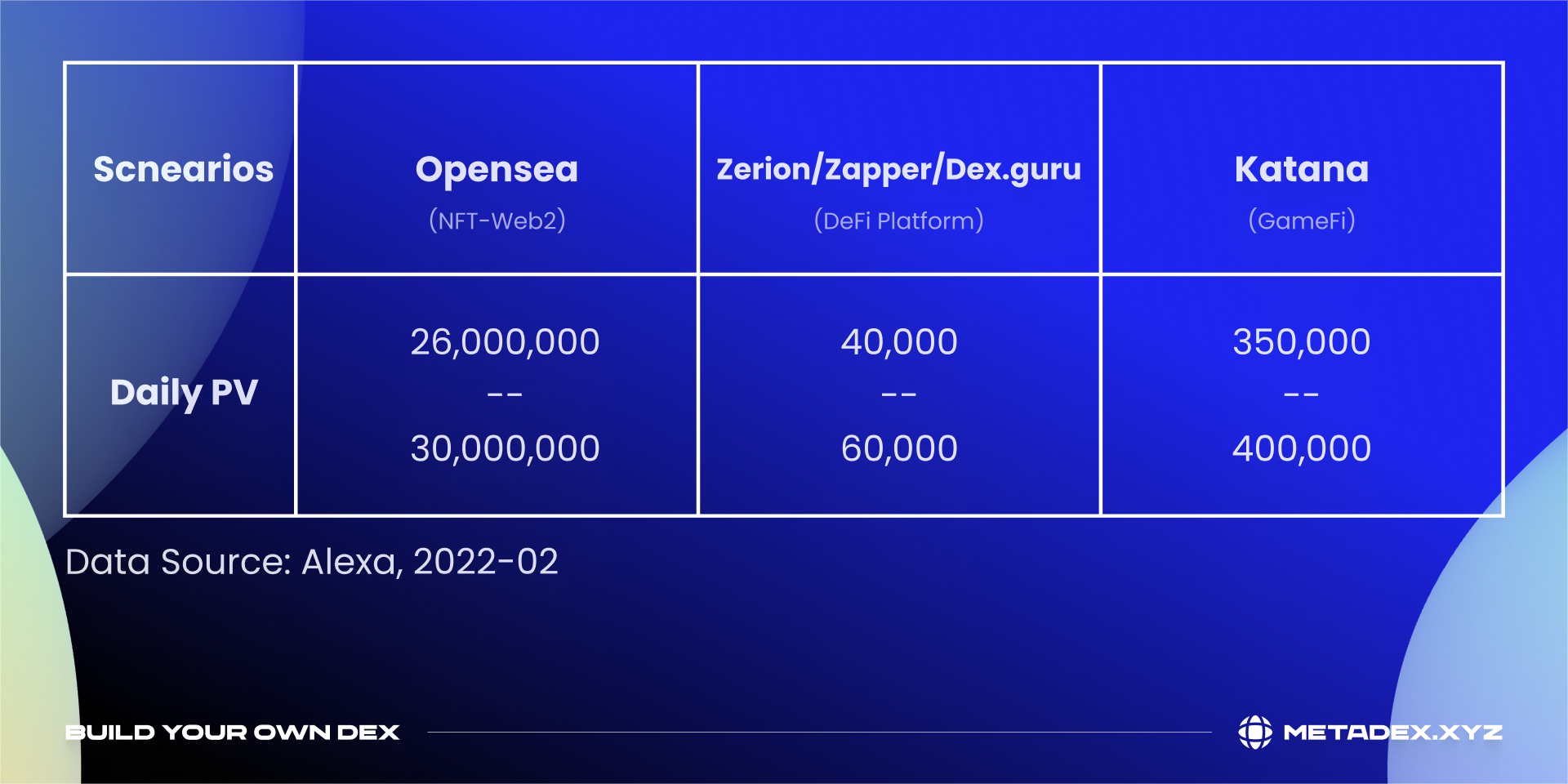
Aggregation platforms are currently the main direction of DeFi, such as zapper and zerion, such as information aggregation platform dex.guru, but their average daily PV is only 40,000-60,000, and the conversion rates of users who convert from these platforms to transactions are respectively 0.087%, 0.076%, 0.042%. [3] In stark contrast, the average daily PV in the Opensea scene is close to 30 million, of which about 50% are users who visit metamask.io for the first time. Guessing from the data, nearly 50% of Opensea's users come from web2.
The magnitude gap between the two is unimaginable. How did this gap between them come about? If the current innovation of DeFi products is to compete inwardly with zerion/zapper/dexguru, or to serve the same user groups as them, what is the point?
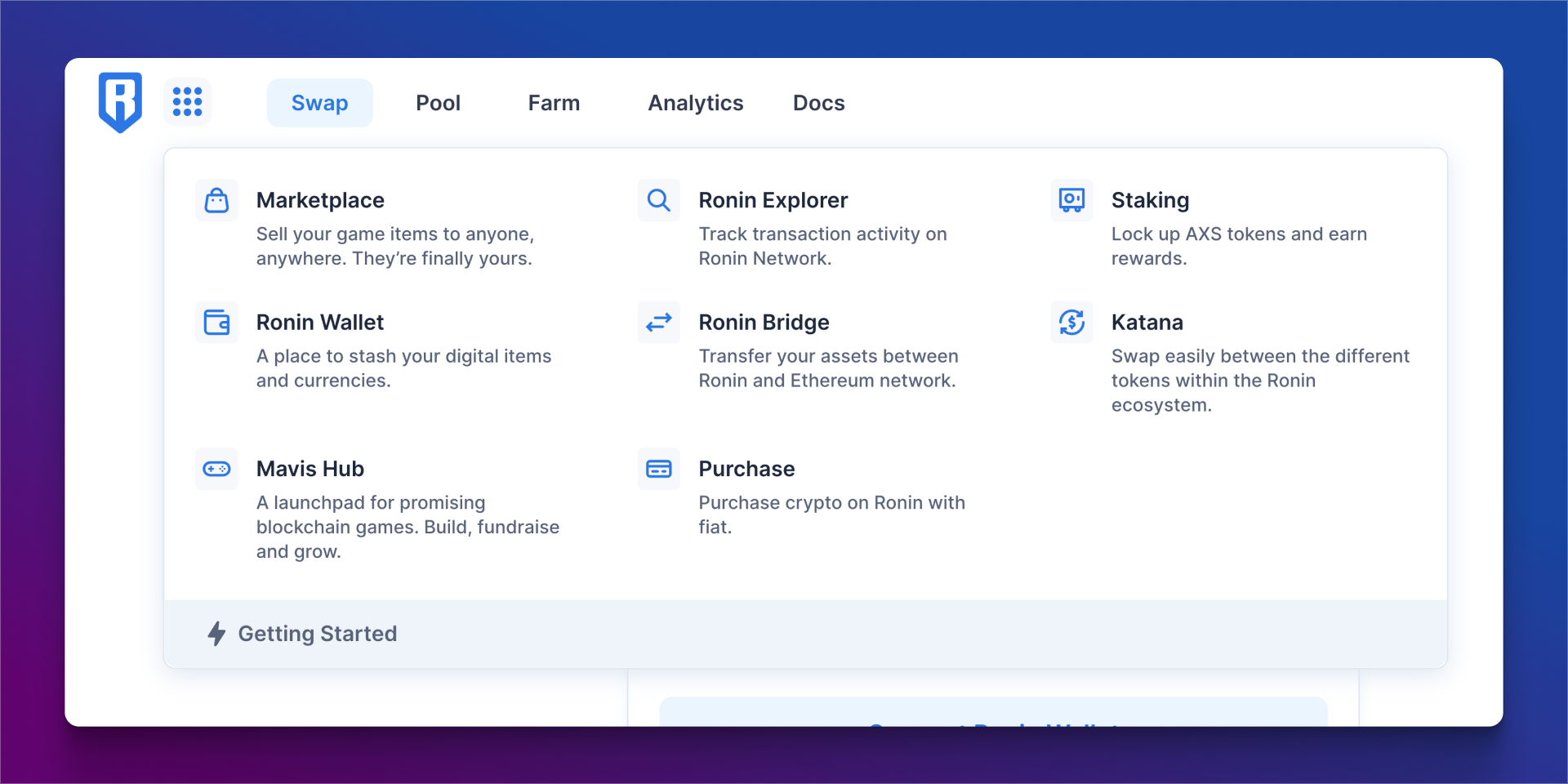
A similar example is katanna on the side chain of Axie, whose Axie transaction volume once exceeded Binance's transaction volume when katanta was at its highest.
it's easy to see:
The DeFi group served by zapper/zerion/dex.guru is an introverted, very small scene with a low conversion rate.
OpenSea's vast traffic pool can expand the service users of DeFi products by several orders of magnitude.
The anata protocol shows that DeFi products should rely on scenarios, rather than being a DeFi platform independently.
The Opensea scenario is actually like web3's Taobao, allowing a large number of web2 users to use wallets for the first time. Compared with the current social scene with no direction, the next scene with a clearer trend must be games. On the one hand, the open economic system of the game can make this system have the opportunity to become "eternal" and "inviolable" through the web3 soil; on the other hand, game users cover a larger and more far-reaching user scale than NFT users, resulting in value is also higher. Compared with the collection attribute of NFT, games are more of a way of life for users, and many users even use games to find the purpose and meaning of life.
MetaDEX: Make DeFi within reach
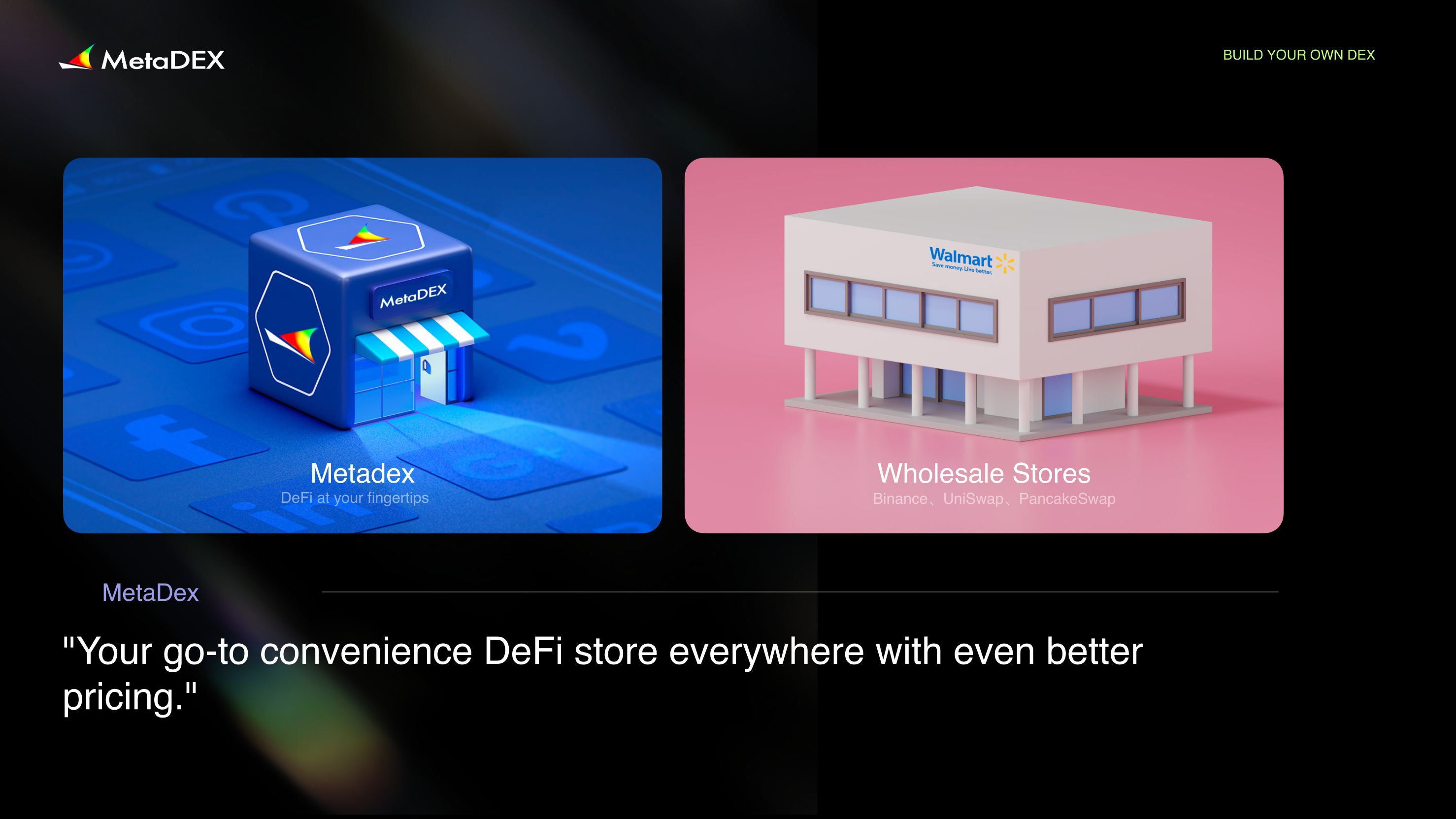
image description
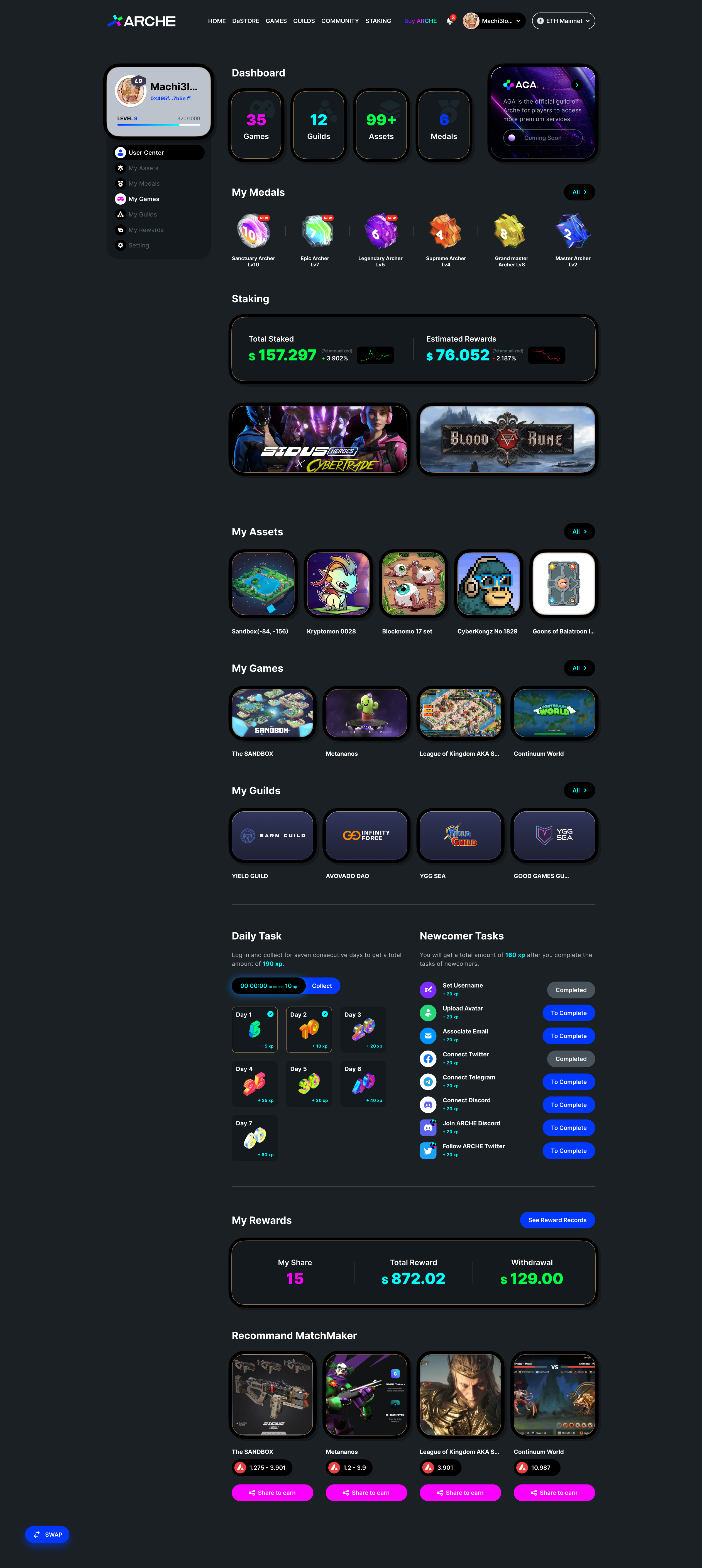
The swap service provided by Arche Network on the player page (powered by MetaDEX)
The concept of "DeFi as a service" currently proposed is more based on the DeFi services provided by its own platform, which is still the logic of the platform's involution. More importantly, use DeFi as a SaaS system to serve more web2 scenarios, just like digitalization in the web2 era empowers physical businesses, and financialization in the web3 era empowers scenarios.

When we mention making DeFi accessible, it has two meanings:
The first layer is user-oriented scenario finance, bringing DeFi infrastructure to each scenario side, and allowing scenarios to match DeFi functions, rather than building a new innovative DeFi platform. For example, in the web2 scenario, credit card-related component functions are integrated; in the web3 transaction web scenario, cross-chain functions are integrated.
In the game scene, MetaDEX has released a small transaction algorithm framework [4], which is dedicated to serving the small transaction in the game scene, allowing game players to complete transactions with one click during the game. At the same time, use the innovative AMM to improve the capital utilization rate of market makers.
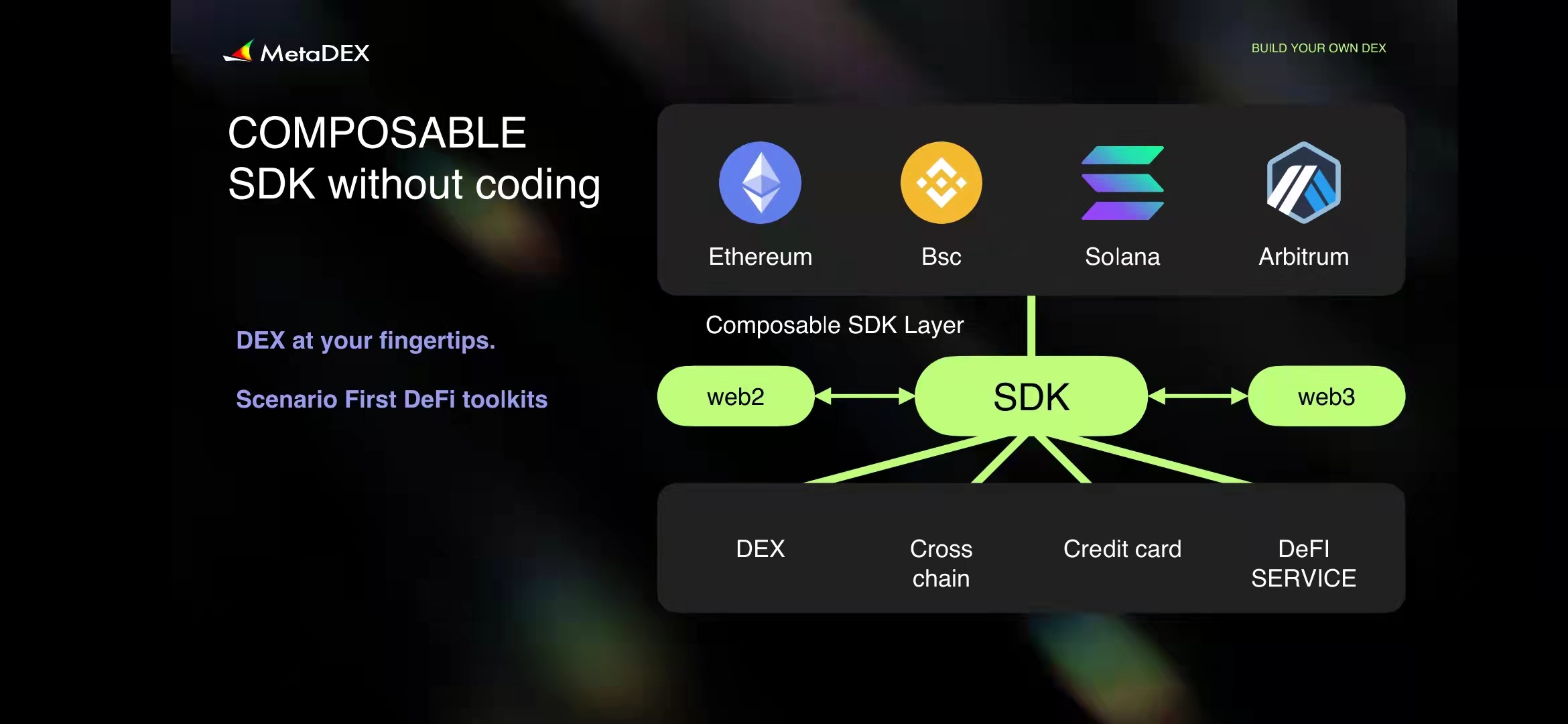
Reference link:
Reference link:
[2] Frankie, An implementation of TWAMM
[3] 0x API
[4] Boo Stark. 2022. WHY WE DESIGN A NEW AMM FOR NOVEL ASSET?



